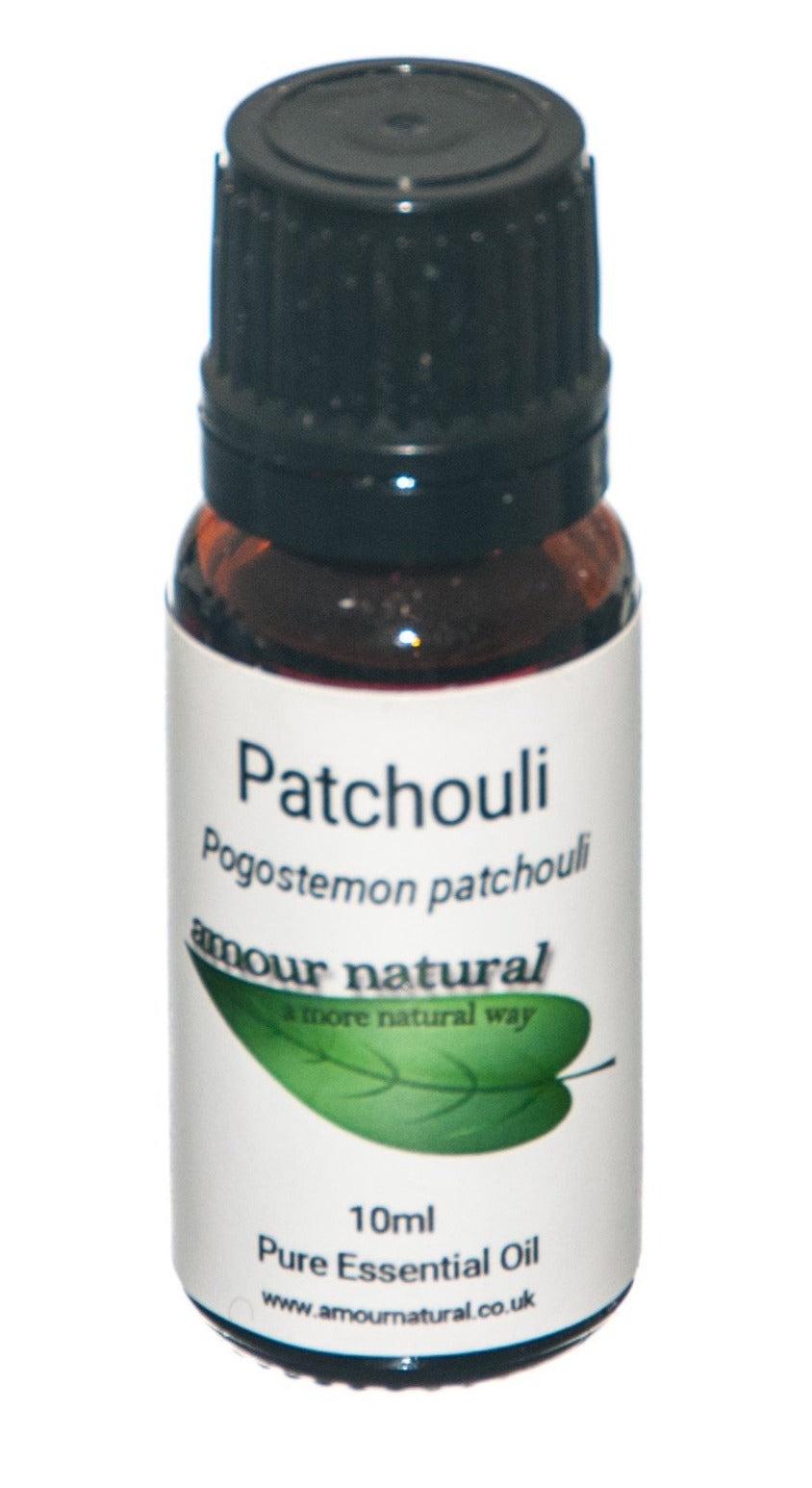Some suggested directions for use:
Add 6-10 drops in a bath.
Mix 5 drops with water to use in an oil burner.
Mix 6-10 drops with hot water as an inhalation.
Mix 5 drops per 10ml of carrier oil for massage .
Precautions
Do not take internally.
Keep away from children and eyes.
If pregnant or have a medical condition consult your practitioner before use.
If oil gets into eyes splash out with water, seek medical advice if necessary.
If unfamiliar with essential oils seek advice from a practitioner.

Details Click to see more
Patchouli (Pogostemon patchouli)
Aroma: Patchouli has a strong, sweet, spicy and exotic fragrance, with a slightly herbaceous undertone.
The aroma: can be quite powerful and prone to linger so a little goes a long way.
The plant: The patchouli plant is native to Malaysia and India. It is a bushy plant with furry leaves and white flowers that have a purple hue. It grows to about 3 feet tall and needs very fertile ground to thrive.
The extraction: Patchouli essential oil is obtained from the young leaves which are dried and then fermented before distillation.
Affects: Patchouli essential oil is often used in skincare products as it is a superb tissue regenerator and helpful in the re-growth of skin cells and the formation of scar tissue. It also helps reduce the appearance of orange-peel skin and is good for rough, cracked skin, sores and wounds. Patchoulis deodorising action helps reduce the smell of sweat and cools down inflammation. It is also used to deter moths, bedbugs and insects Patchouli has a balancing and grounding effect on the mind and emotions and is used for reducing lethargy.
History: The name patchouli originates from India and has a long history of medical uses throughout India, Malaysia, China and Japan. In the Victorian times dried patchoulis leaves were used to naturally perfume linen and protect it from moths. By the 1960s the oil had become very fashionable, largely due to its part in the flower power era.
Chemical constituents: Patchoulol (Alcohol), Benzoic, Cinnamic (Aldehydes), Eugenol (Phenol), Cadinene (Sesquiterpene). Blending Patchouli blends well with black pepper, frankincense, geranium, bergamot, clary sage, lavender and myrrh.


